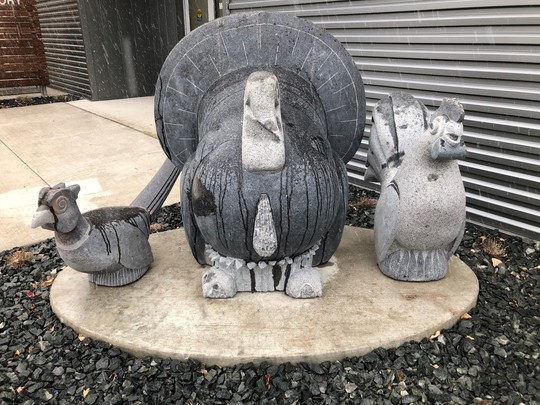More stories of significance...
Swine Health Information Center offers support to investigate unsolved morbidity and mortality cases
As a reminder, in incidents of high or ongoing morbidity or
mortality where an etiology is either not identified or there is a strong
suspicion that the identified etiology is not the likely cause of the outbreak,
SHIC is offering diagnostic fee support after the initial diagnostic workup is
completed and paid for by the owner. In these cases, additional support
for the fees of further diagnostic workup may help to identify newly introduced
or emerging swine diseases. A description of the requirements, submission, and review process for the Support for Diagnostic Fees program can be found on
the SHIC website by clicking this link.
USDA updates
On
October 27, the USDA's Animal and
Plant Health Inspection Service launched updated Web pages to make it easier
for those involved with importing or exporting equine to understand and meet
the requirements. Users can select the type of import or export desired –
permanent import, temporary import, U.S. horses returning to the U.S. after an
event, embryo or semen import, or export – and the country involved. The
website will provide the necessary guidance and forms quickly and easily.
Click here to go to the Equine Import and Export Website for information. If you have questions while using the new pages, please
contact the import staff for assistance. You can reach them by phone at
301-851-3300, option two, or by email at VS.Live.Animal.Import.Export@aphis.usda.gov.
----------
Effective February 1, 2018, the identification requirements for export of U.S. breeding cattle to Canada
will change. After this date, Canada will require an 840 radio frequency
identification (RFID) tag AND
a USA tattoo in the right ear. The
USDA metal tag will no longer be accepted as an option for identification of
cattle for export to Canada.
The Canadian Food Inspection
Agency has begun issuing import permits for breeding cattle to reflect these
new requirements. The protocols and certificates for breeding cattle are
updated accordingly on the APHIS IREGS website and Veterinary Export Health Certificate
System.
This change will
significantly reduce time during inspection at the Canadian border, as well as
eliminate the need for U.S. animals to be retagged with Canadian identification
upon reaching their destination in Canada.
New sculptures at the Minnesota Poultry Testing Lab
Peter Morales of St. Paul crafted "Three Galliformes at the Lab" out of St. Cloud Gray granite quarried in St. Cloud (photo below).
How big are those birds?
- Turkey: 6,000 to 7,000 lbs. and stands 4.5 ft tall.
- Pheasant: 500 – 600 lbs. and stands 2 ft tall.
- Rooster: 1,020 lbs. and stands 3 ft tall.
It took Morales about 6 months from the end of January to the end of July to carve the turkey. The other two birds were created between August and October and took around 6 weeks to craft. They were installed at the MPTL on November 3 using a 40-ton crane.
Morales explains the design elements, "With respect to the type of work done at the Lab, the lines on the Turkey suggest a labyrinth. In Greek mythology, the labyrinth serves to contain and constrain a hazard (the minotaur), and is constructed in such a way that only the hero can find his or her way in or out. The eyes of the three birds have a spiral shape that represents the path of enlightenment."

|